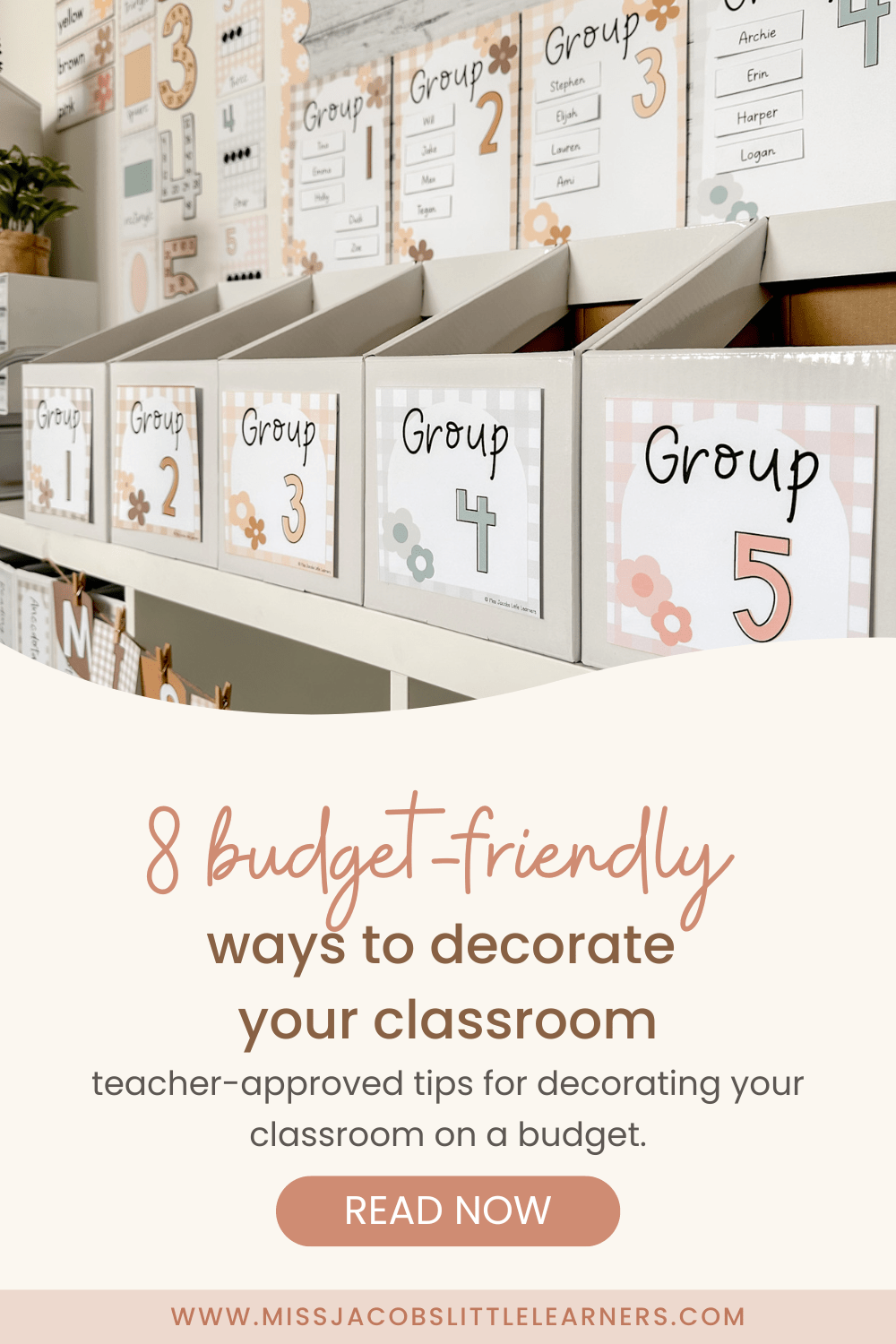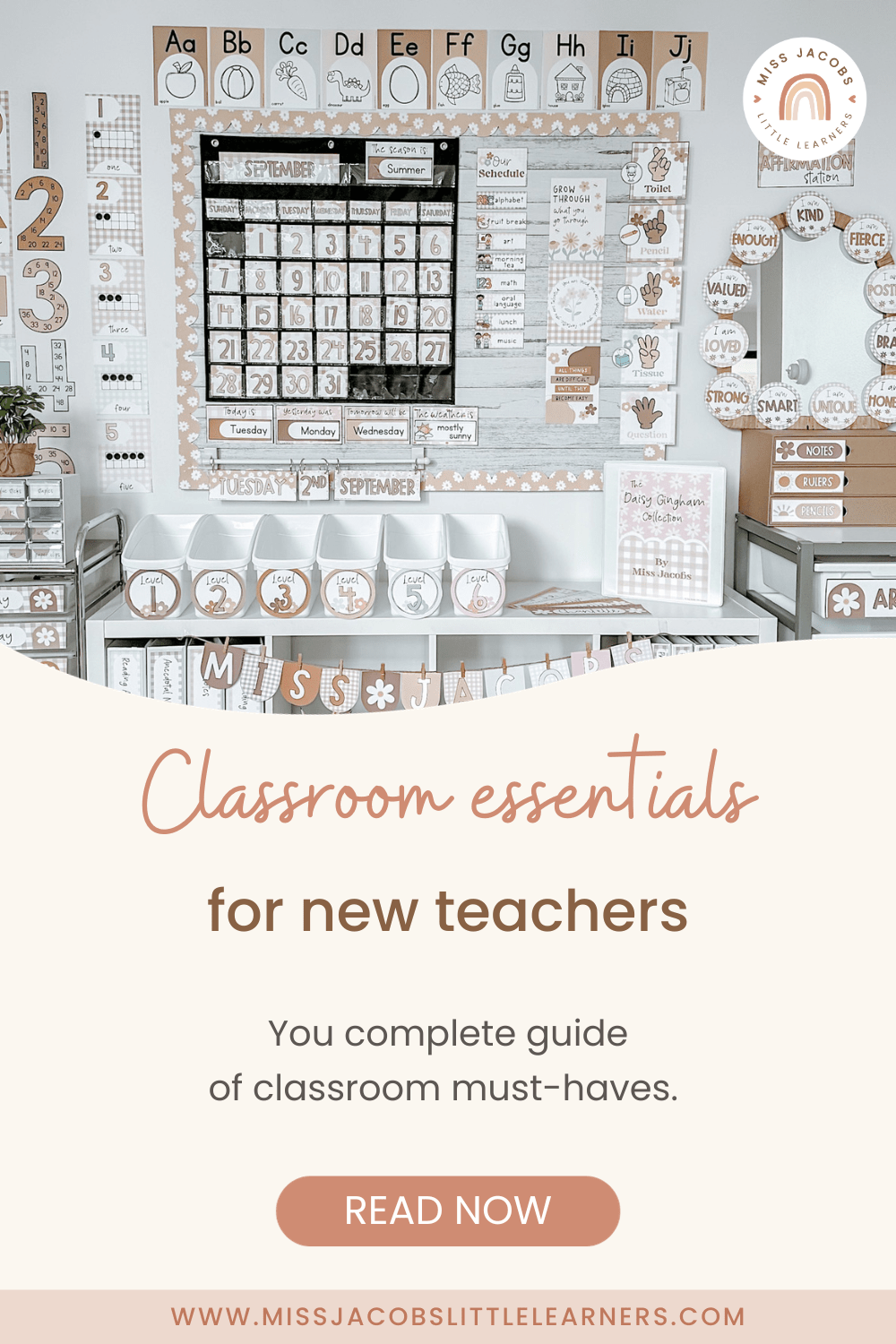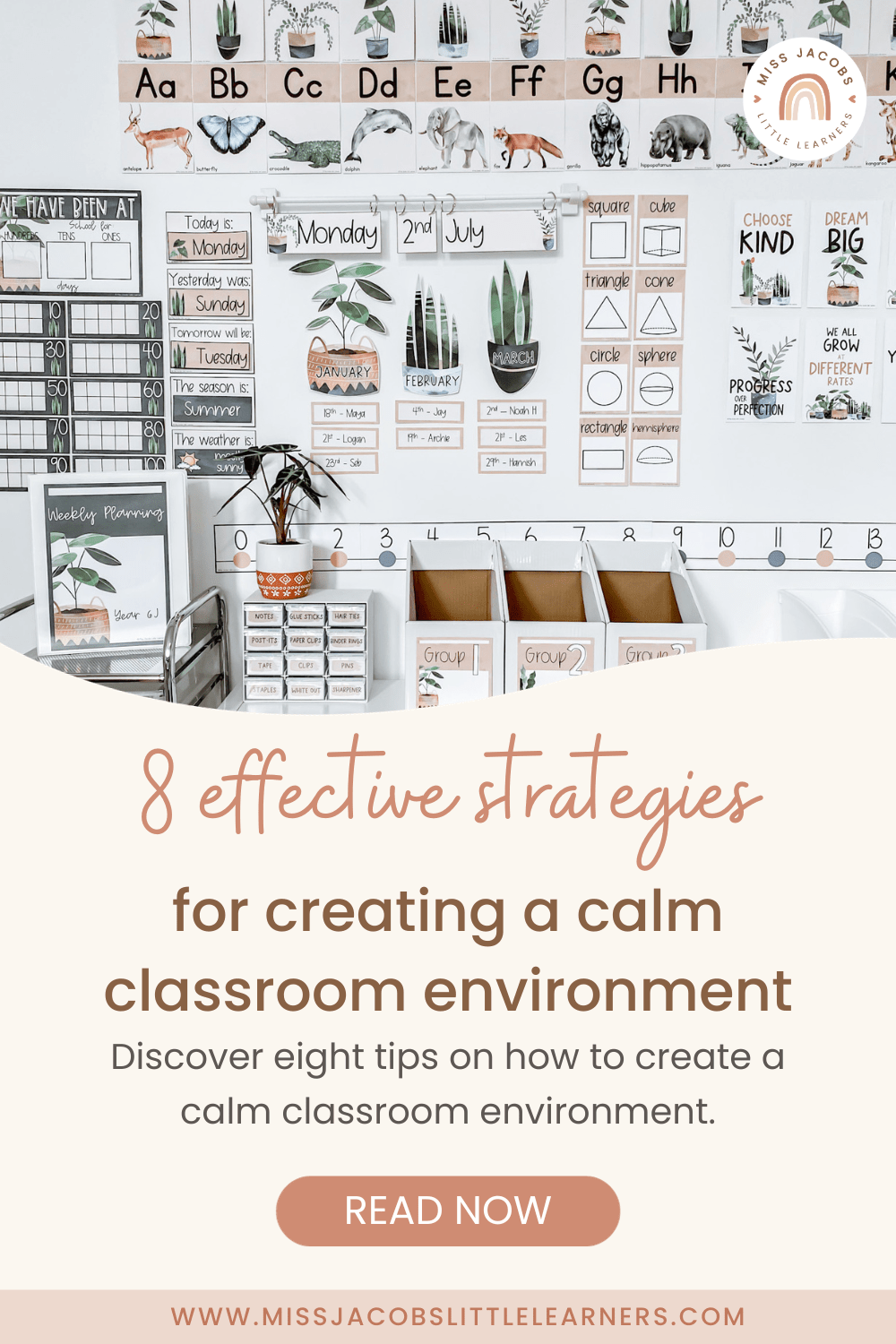
8 budget-friendly ways to decorate your classroom.
As educators, we’ve all been there, dipping into our own pockets to pick up those added extras for our classrooms. Creating a visually stimulating learning environment isn’t always easy when...
I’ll be the first to admit that when I was studying to become a teacher, I mostly focused on all the wonderful, easy aspects of being a teacher: cute classrooms, sweet hand-written notes from students and rewarding teaching experiences.
I didn't spend as much time preparing for the days of classroom meltdowns, or how tough if would be to stand in front of an unruly bunch of kids who would rather do *anything* else than to listen to their teacher. Hello imposter syndrome!
Developing classroom strategies to make everyone's days easier was something I well and truly learned on the job, through a lot of trial and error, and pushing through the hard times.
Now that I have a decade of teaching experience behind me, one of my absolute favorite things is being able to share these hard-earned lessons with the incredible teachers in the MJLL community.
I genuinely believe that having the support of peers is the secret sauce to thriving in the teaching profession. I’m sharing tried and tested classroom management strategies that I learned the hard way – so you don’t have to.

To get started on the right foot, it's so important to set clear and realistic expectations with your students. It's a good idea to map out your own thoughts and ideas first, then when sharing with the class be sure to ask students for their thoughts. Making this a collaborative process means your class is more likely to understand the actions. Plus it’s a great relationship-building exercise, rather than your students feeling like they are simply being told what to do. Now that you have your classroom rules set out, make sure you display them with the help of my resources somewhere easily visible to all.
Creating a list of classroom jobs and their corresponding responsibilities is another important activity to kick off the school year. Establishing a rotating schedule of tasks for your students not only encourages them to assume responsibility but also, as a significant benefit, aims to foster a cleaner and more organized classroom.
Because who among us hasn't been left cleaning up after the bell rings on a Friday afternoon? And cleaning up, my friend, is a responsibility that’s best shared!
Say it with me: no class is the same. Each year, you’ll have a bunch of little personalities and learning styles different from the last. My advice? Expect the unexpected! Being well prepared plays a crucial part in setting your students up for success when it comes to their learning environment.
Also on the blog: how to set up effective learning areas in your classroom.
Have a think about how much group work you are planning to do? Maybe creating an area for physical activities and breaks? A reading nook, math wall, quiet work corner, a wall that’s dedicated to showing off student work, an affirmation station and other designated areas for different classroom activities will help create an engaging, easy and consistent environment for your students.

My Australiana Affirmation Station encourages positive self-talk in the classroom.
When things go pear-shaped (and trust me, they will) it can be so hard to bite your tongue and not immediately tell a student off. Especially when they're being way too loud, bothering another student, or disrupting the whole class (temper tantrums… they happen). While there will always be a place for redirecting bad behavior and sometimes even consequences, reinforcing and praising good behavior rather than choosing to punish bad behavior really makes a difference on how your students learn and behave.
Try to respond thoughtfully rather than reacting impulsively. For example, if your class is getting out of control, take a moment to think about how to handle the situation in a way that's kind to you and your students. Getting angry doesn't help anyone, and showing compassion is a better way to solve problems. It's not always easy, but it's a skill that can benefit you both in and out of the classroom.
If the class is truly getting unwieldy, it might be time to revisit classroom rules and responsibilities (or checking if it’s a full moon… ha!).
When it comes to fostering a growth mindset, it’s essential that your classroom is a safe place for learning from mistakes, positive self-talk, setting big goals and constructive criticism.
If you’re not familiar with the concept, having a growth mindset means embracing challenges, learning from feedback, persisting despite setbacks and valuing the process over the outcome. Adding Growth Mindset Displays to your classroom is a great way to encourage this with your students. Plus my Affirmation Stations help your kids stay positive when they’re tackling challenging work or having some big feelings.
In addition to Growth Mindset Displays and Affirmation Stations, it’s also important to embrace and enforce these principles in practice. I’m talking: focusing on rewarding good behaviors and the process, rather than singular achievements or outcomes.
This might mean celebrating and praising students who are making an effort and keep trying after setbacks, not just the super star straight A students in your class. We want to allow students to make mistakes, and create a supportive environment where no one is afraid to take initiative and try again.

Spotty Pastels Growth Mindset in @miss_grosse‘s classroom.
No one feels great sitting down and focusing all day, and if you find student behavior a bit loud and restless, creating good circuit breaker activities that include movement and brain breaks might just do the trick.
Set up space and time for games or puzzles for your students to work on in teams, or maybe take them for a virtual tour to an interesting place via YouTube.
Making some learning experiences more interactive is a simple way to enhance learning and concentration. If you're teaching spelling for example, set out a group of letters on the floor, and ask your students to spell them by moving from one letter to another in the right order.
Creating daily or weekly routines that your class can look forward to is such an easy way to create a more positive classroom. Have calendar and seasons displays that your students can be involved in updating, and a birthday display to celebrate students' birthdays with small activities or mini-parties. Who doesn't love a monthly themed dress up day for example, or a small party to celebrate finishing up a project?
Also pay attention to the different cultural backgrounds in your classroom, and whether there are big days or events that many of your students celebrate, and how you can incorporate them into your classroom. All these little things will help you build relationships with students and make them feel like you genuinely care what's going on in their lives.

My Birthday Display in Earthy Boho Rainbow

My Calendar Display in Modern Jungle.
Teaching my class hand signals was an absolute game-changer in creating a quieter and more focused classroom with less disruption. Hand signals give students quiet ways to ask for a toilet break or a question for example, and you can respond by simply nodding without having to stop talking: win-win for both of you!
My Voice Level Displays are another effective tool in teaching your students which voice levels are appropriate for different activities. Seriously, your ears will thank you! Remember to set these up together with your students so they feel involved in the process and learn the rules from the get-go.

These Hand Signals in Daisy Gingham help teach students non verbal communication.

Spotty Brights Voice Level Display by @teachingwith_rachael.
It might be the simplest classroom management technique out there, but I think all good behavior management really boils down to this. Your students learn directly from you, and not just as you say but as you do. All too often, we don't give kids enough credit for noticing small changes in our moods, tone of voice and body language.
Becoming an honest and kind communicator to your class will reflect straight back at you. Of course, honesty doesn’t mean saying everything you're thinking, but if you're having a bad day or maybe have noticed a problem in the classroom that needs addressing, communicating that in a way that's appropriate and clear to your students will help them in turn become open communicators.
This is my number one piece of advice – especially for new teachers.
Repeat after me: remember to also be kind to yourself.
We often set impossible self-standards and ask things from ourselves we would never ask from a friend. Strive for progress over perfection. That isn't to say you can't be well prepared, but accepting that there will be hard days and adjusting to challenges with a flexible and kind mindset will make your life so much easier.
Doing your best is the best you can do, and embodying this idea both to your students and yourself is the way to a positive, supportive and open classroom culture.
Plus modeling kindness in your classroom is so important in teaching our students to be compassionate towards themselves, and set realistic and clear expectations they feel confident to achieve.

Teacher and Founder of Miss Jacobs Little Learners. If you’re dedicated to making a positive difference in the lives of your students – I’m here to help you.
Read MoreMiss Jacobs’ Little Teacher Community is a dedicated space for teachers just like you!
JOIN HERESign up as a Miss Jacobs BFF member today and get access to free resources!
sign up
As educators, we’ve all been there, dipping into our own pockets to pick up those added extras for our classrooms. Creating a visually stimulating learning environment isn’t always easy when...

Following the overwhelmingly positive response to the 'Cute Labels' collection (seriously you guys 🤩), your enthusiasm for a sea life theme couldn't be ignored. So, after some brainstorming and a...

Ahhh, to be a grad teacher again. There’s no feeling quite like walking into your very own classroom for the first time. The excitement, the nerves, the niggling sense of...

Have you ever walked into a classroom only to find your students fidgeting, interrupting, daydreaming, staring out the window, making paper planes, forgetting their inside voices and the stories that...